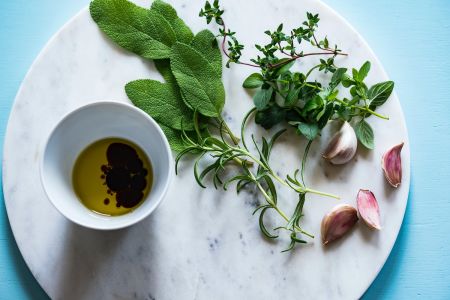All crooks have two things in common. 1. They want to make as much money as possible with as little work as possible. 2. They are smarter than everybody else.
So they do things like rob banks, print counterfeit money and smuggle drugs. Some of them even go into politics. But those chumps are all pikers compared to the real gravy train: Food fraud. If you can take cheap food and palm it off as something exclusive, you can run that scam over, and over and over to the same people – – forever (or until you get caught). Our firm has opposed some of these characters during our 30 years in business. Even when you catch them red handed, they act surprised and try to keep it going.
One of the really great scams that has gone on for years, and still goes on today, is counterfeit balsamic vinegar. Most of it in stores is bogus.
Real, traditional, authentic balsamic vinegar comes from two regions in Italy and starts with specific strains of white wine grapes that are crushed into juice with the skins, seeds and stems. This concoction is cooked down to about 50% volume into a concentrated syrup and then aged in a progression of barrels made from chestnut, cherry, oak, mulberry, ash or juniper for at least 12 years. Some of the premium products are aged for as many as 50 to 100 years.
Well, this is all very expensive – – and this is where the con-game begins. But, this one is doubly tricky because it can be a double-con – – one of which is actually legal.
The illegal con: Mostly originating in Italy, counterfeit balsamic starts out as “plonk” (cheap generic table wine grapes) that is palmed off as the expensive varieties. Then, it might be aged for a couple of years (or less) and then diluted with cheap white vinegar and pumped up with thickeners and coloring agents. The product is then labeled “balsamic vinegar” and sold without disclosing its sordid past. 3.38 oz of real 25-year-old balsamic vinegar can cost more than $150, and a bottle of 50 year old can be $300. Even a bottle of 12 year old (the minimum allowed) can go for $75. So when it costs $10 or so to make a fake, that’s some serious profit. Last year, the Italian police conducted a sting and seized over 9 tons of bogus balsamic stock. And no one thinks they got all of it.
The legal con: It’s OK to label something “balsamic vinegar” and put a bunch of bogus junk in it, so long as you list the bogus junk in the little ingredient statement on the back. Common additives are white vinegar, GMO brown sugar and caramel coloring.
The Food Lawyers® Advice:
- Admit to yourself it’s impossible to be sure without a DNA test. I believed my parents when they told me I was their kid. I never bothered with a DNA test. I’m not suggesting one here.
- Be prepared to spend some real money. If it’s $20 a bottle, like we used to say in South Philly, “Feggeda Bout It.”
- Look at the ingredient statement. The only ingredient should be “grape must.” “Must” is the grape juice, seeds, skins and stems before they’ve been cooked down to 50% volume. If you see anything more than “grape must” listed, you know it’s watered down, bogus balsamic. And if the ingredient list names wine vinegar before the “grape must,” you know it’s more than 50% watered down.
- Look for the designation, D.O.P. Denominazione di Origine Protetta – – Italian for “Protected Name of Origin” – – is the EU certification of authentic balsamic. Odds are good you’re getting the real thing. I.G.P. denotes a much cheaper blend with white vinegar from Modena, Italy. Any other combination of letters is just B.S.
But there’s another alternative: If you like the cheap, watered-down stuff that’s normally served in Italian restaurants (it can actually taste pretty good), go ahead and use that at home. Just don’t pay $300 for 4 ounces.

